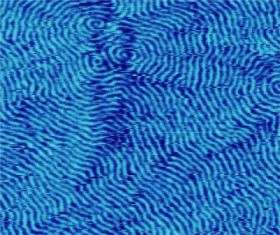Using a magnet to tune a magnet

An international research team, led by scientists at the London Centre for Nanotechnology (LCN), has found a way to switch a material’s magnetic properties from ‘hard’ to ‘soft’ and back again – something which could lead to new ways of controlling electromagnetic devices.
The research will appear in the journal Nature on August 2nd and shows how a magnet can be ‘tuned’ by subjecting it to a second magnetic field, perpendicular to the original.
Magnets can be classified by their ‘hard’ or ‘soft’ magnetic properties. Hard magnets, sometimes called ‘permanent’ magnets, have fixed or ‘pinned’ domain walls which mean the material stays magnetised for a long time. Soft magnets have moveable domain walls that can be easily flipped. These materials exhibit impermanent magnetic properties.
Professor Gabriel Aeppli, Director of the LCN and a senior member of the research team, explained the significance of the research: “Whether a magnet is hard or soft determines what you can use it for. Typically, you would use a permanent magnet to fix a note to the door of your refrigerator because you want it to stay there for a long time. On the other hand, you might use a soft magnet in a motor or transformer because it would be better at adapting to the rapid changes in alternating current and would dissipate much less energy than a hard magnet.
“It is very rare to be able to continuously tune wall pinning in a magnet but we have now shown how it can be done in a model magnet at a low temperature. In the process, we demonstrate a new route to applications of magnets at higher temperatures and show how chemical disorder at the nanometre (one billionth of a meter) scale can have a huge effect on the properties of a macroscopic (centimetre scale) magnet.”
Most physical and biological systems can be thought of as disordered. Semiconductors rely on randomly placed impurities for their electrical properties and uses, while the chemical and structural impurities in magnets determine the domain wall pinning and therefore how easily their polarity can be changed.
“From a theoretical point of view, it’s been really interesting for us to see the properties of a large, disordered system being dominated to such an extent by a rare configuration of impurities,” says Professor Aeppli. “Unlike biological systems, in materials science we are used to seeing behaviour which is dominated by the average characteristics of the system. Here we can observe the massive influence of a miniscule number of chemical and structural defects.”
Source: University College London





















